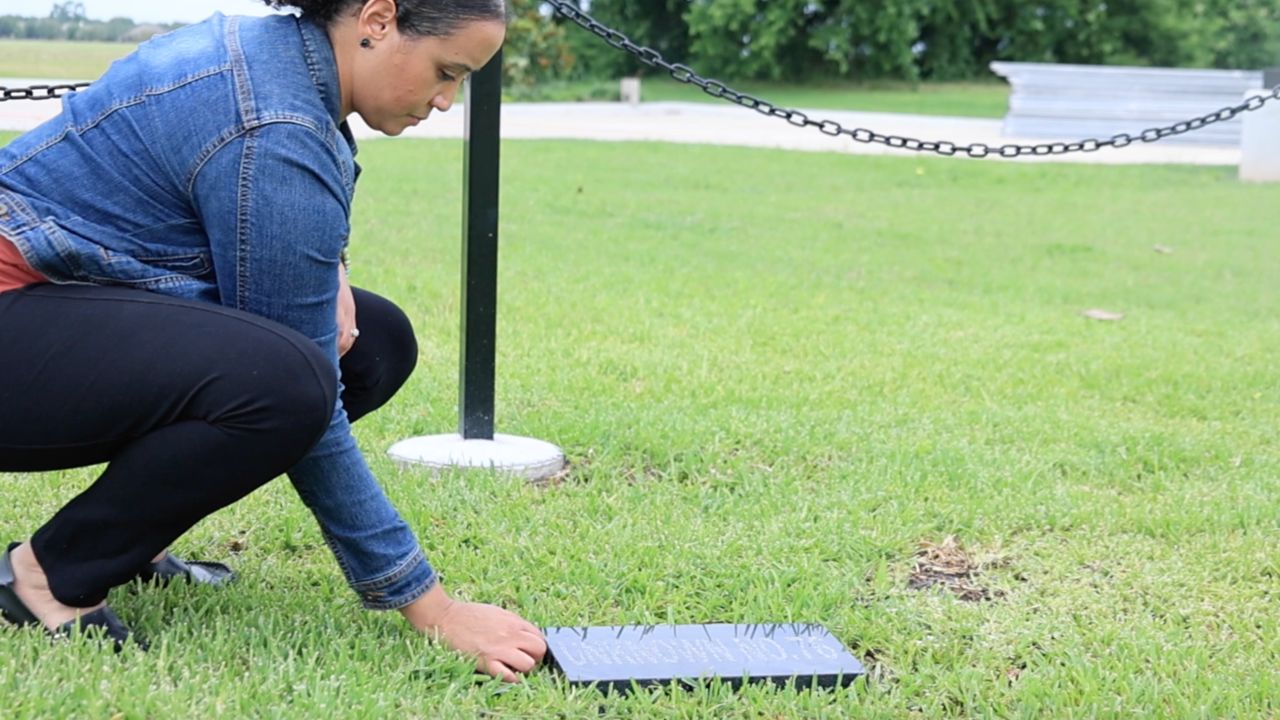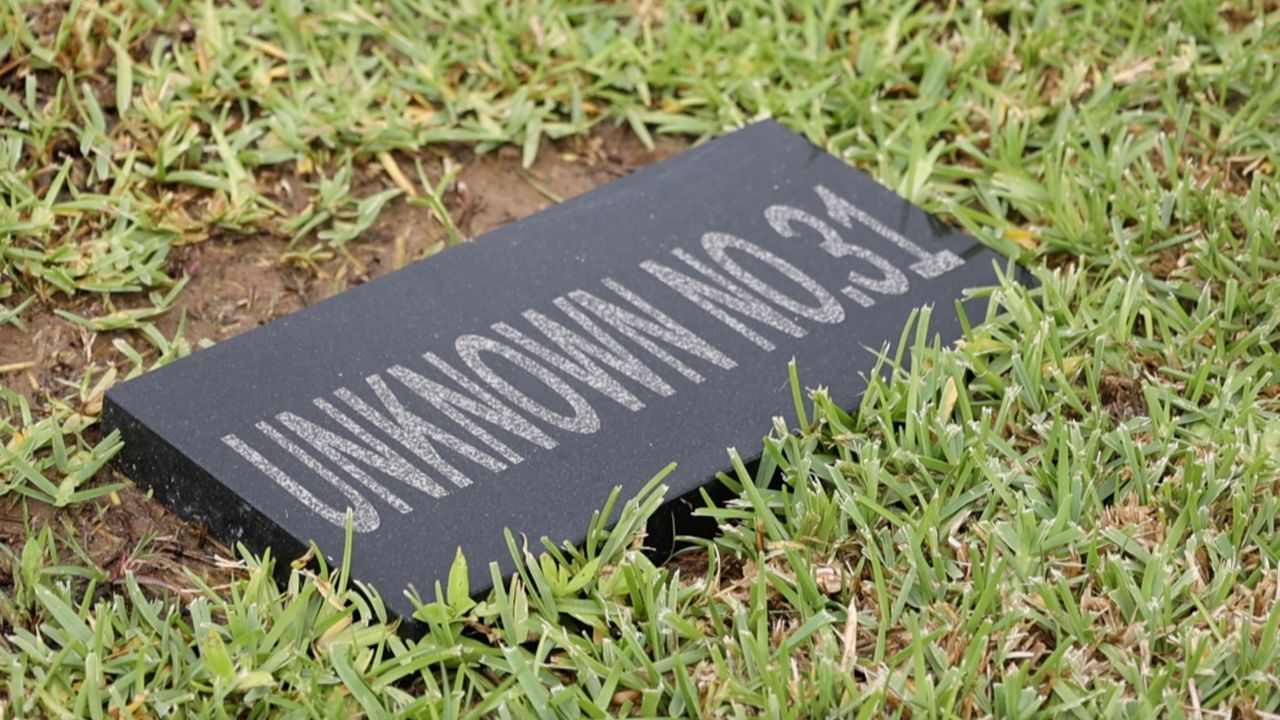SUGARLAND, Texas — Located a few miles outside of Houston, the discovery of the Sugarland 95 rocked a school district and a community. In 2018, the remains of 95 individuals were unearthed by crews at a construction site for a new school in the Fort Bend Independent School District. The discovery exposed the dark history of Texas and the truth surrounding convict leasing.
“This is a part of history that’s been hidden for so long. This is the truth that we don’t tell”, said Olainu-Alade.
Chassidy Olainu-Alade, is a historian who works at the Fort Bend Independent School District as the Coordinator of Community & Civil Engagement. Olainu-Alade, gave Spectrum News a tour of The Bullhead Camp Cemetery, a historic site recognized by the state of Texas.
Below the service of the cemetery lies the remains, said to be Black prisoners who worked on prison farms through convict leasing. Convict leasing was a law that allowed forced labor among Black men as a punishment if they were convicted of a crime.
The practice of convict leasing was a common in the South after the Civil War, often referred to as a loophole to the 13th Amendment.
“So you’re talking about petty crimes with heavy penalties. Particularly assigned to African American individuals. Not having a job and hanging around. So if you kinda think back, if you’re an enslaved person in 65 [1865] and they were not enslaved, but if you chose not to work on a plantation as a laborer then you were a vagrant and you could be arrested for being a vagrant which would end you up here. Working for the state,” Olainu-Alade. “The land still existed. The crops still existed. So who’s going to work the land? Individuals who were incarcerated and then sent off to work on prison farms, which essentially the exact same plantations that operated prior to the war.”

Upon the groundbreaking discovery, the remains were exhumed for DNA analysis and research in order to learn more about who they were and why they were buried there.
“So when we have these 95 individuals and we say they were a part of the bull head labor camp. That was the labor camp that was established through the use of Black men working in the sugar field. Not only did they endure intense physical labor during their time here. But their causes of death are also indications of the type of life they experienced while here”, said Olainu-Alade
So far, researchers were able to identify 74 of the 95 individuals that include 73 men and one woman, ranging in age from 16 to 60 years old.
Olainu-Alade tells us some of the individuals were chained together using the types of chains that would have been shackled to feet or machinery during that time period.
She believes the discovery should be amplified through-out the course of American History. She went on to say The Bullhead Camp could be used as proof of the hidden truths that has founded the nation.
“There’s 40-years of U.S. history that not only our curriculum fails to address but our textbooks failed to address it. Where is it? And there’s no reference of convict leasing and if there is a reference to prison labor or chain gangs it’s in the wrong historical context. It’s like in the 1930s and 40s but where did that start. It starts right here,” said Olainu-Alade
The Fort Bend Independent School District is leading the charge in teaching a curriculum on the Sugarland 95 and convict leasing in Texas.
“This is a real topic in academia, not just everyday educational systems. But it’s so important because it existed, it occurred. This provides the real life archaeological artifact based, site based learning that is needed to substantiate all of that historical research,“ said Olainu-Alade
The district released its final report on the discovery which breaks down the finding and the three years of research that went along with it. As research continues the 95 unknown graves have been carefully marked in case they are able to identify descendants in the future.




